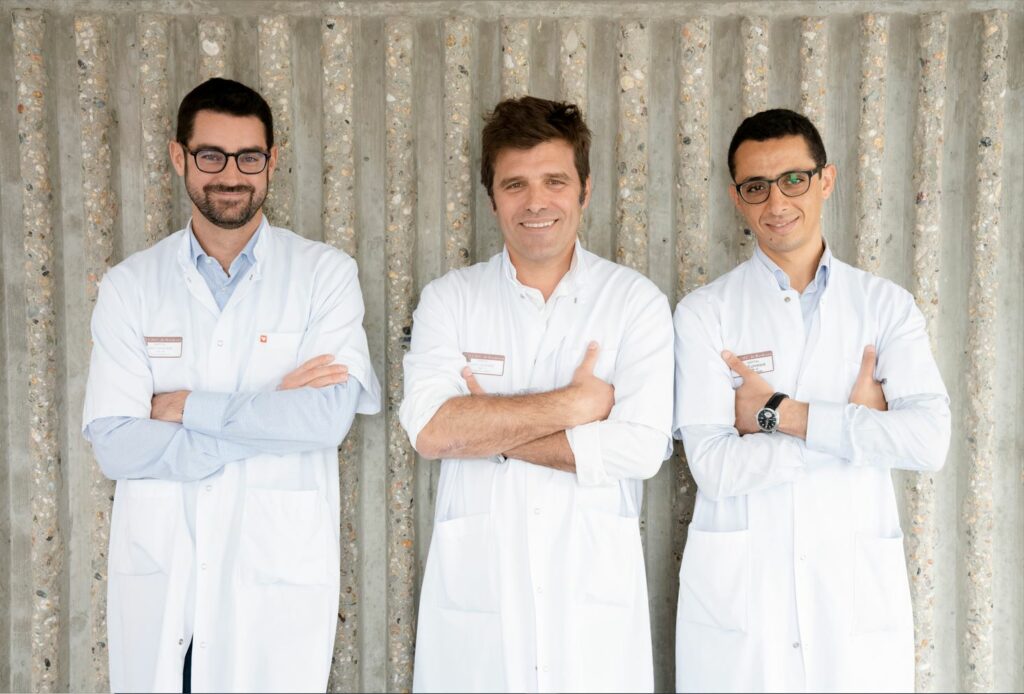Congenital heart disease

Prof. Jean-Benoit Thambo’s team, affiliated to the Liryc Institute, takes care of patients with congenital heart disease.
What is congenital heart disease?
Congenital heart disease is a disease of the heart, characterized by a heart defect present at birth. Its severity can vary, from a very minor illness without any particular impact on quality of life, to a more serious one, which requires treatment. Five out of 1,000 births are affected (source: Fédération française de cardiologie).
In practice, congenital heart disease occurs when the cavities, walls or blood vessels near the heart do not develop normally before birth. There are several types of congenital heart disease, including:
- Abnormalities of communication between cardiac compartments. The two regions of the heart that should not normally be connected communicate through a hole in the wall of the heart.
- The persistent ductus arteriosus: during foetal life, there is a small duct that connects the pulmonary artery and the aorta, which is normally reabsorbed after birth. When it remains, it interferes with the work of the heart and can cause pulmonary arterial hypertension.
- Narrowings, or “stenoses”: these are narrowing of the arteries, veins or abnormalities of the heart valves that impact the passage of blood.
- Tetralogy of Fallot: this syndrome combines several heart defects – interventricular communication, pulmonary stenosis, displacement of the pulmonary artery and hypertrophy of the right ventricle.
- The transposition of the large vessels: in this case, there is inversion of the arteries of the heart (pulmonary and aorta).
What are the causes or risk factors of congenital heart disease?
These pathologies are linked to abnormalities in the development of the heart during the foetal period. Often, the cause of these abnormalities is not known.
Known causes include:
- Exposure of the foetus to infections from the mother (diabetes, rubella, etc.).
- Certain inherited genetic abnormalities and chromosomal abnormalities.
- Taking certain therapeutic drugs.
- Environmental factors, such as air pollution, pesticides, etc.
- Consumption of tobacco, alcohol or recreational drugs during pregnancy.

How to diagnose congenital heart disease
Congenital heart disease can be detected in utero by ultrasound during pregnancy, during an examination after birth, or by observing suggestive symptoms in the baby. Some abnormalities are not discovered until adulthood.
Firstly, the diagnosis of the cardiologist will study the symptoms, as well as the medical and family history. Secondly, a variety of tests enable exploration of the heart:
- A chest x-ray.
- Magnetic resonance imaging (MRI) of the heart.
- An echocardiogram – can be done before a child is born.
- An electrocardiogram (ECG).
- Cardiac catheterization (consisting of inserting a catheter into an artery at the root of the thigh or arm to bring it up to the heart).
- Pulse oximetry (to measure the oxygen in a baby’s blood using a sensor attached to the hand or foot).
- Genetic testing.
How to treat congenital heart disease
Treatment varies according to severity, ranging from simple monitoring to surgery or specific drug treatments.
Drugs are used to treat the symptoms and to improve the state of health (control of blood pressure, heart rate, heart rhythm or the amount of fluid in the body).
Some congenital heart conditions may require surgery or other procedures:
- Cardiac catheterization procedures, to repair simple holes in the heart or to enlarge narrowed areas.
- Percutaneous coronary procedures, to repair or replace faulty heart valves.
- Transcatheter aortic valve implantation, to place an artificial aortic valve over the damaged one.
- Open-heart surgery, necessary for problems that cannot be solved by less invasive procedures.
Prof. Thambo’s department provides diagnostic and therapeutic, surgical and procedural care for patients with congenital heart disease, under the leadership of the Complex Congenital Heart Malformations Reference Centre. Patients are taken care of from the antenatal diagnosis in the foetus, then in new-born infants, children and eventually adulthood.
Even with congenital heart disease, patients can lead fulfilling lives. Several research programmes conducted by the Liryc team focus on the impact of heart disease on quality of life, with the implementation of cardiovascular rehabilitation in centres and at home.
